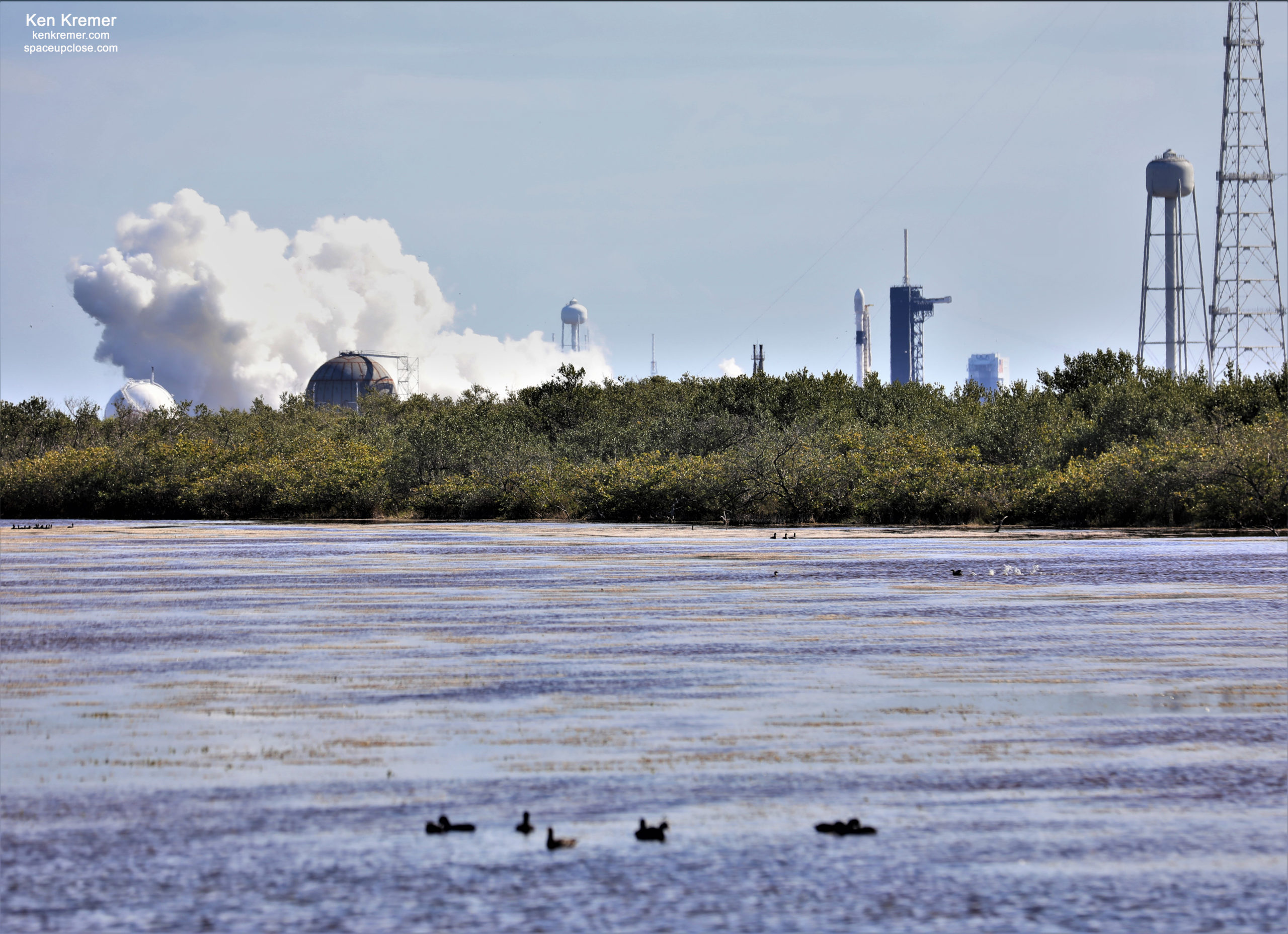
For SpaceUpClose.com & RocketSTEM
CAPE CANAVERAL NATIONAL WILDLIFE REFUGE, PLAYALINDA BEACH, FL – After successfully completing a static fire test Sunday afternoon, Jan. 31, SpaceX was initially targeting predawn Tuesday for launch of the next batch of 60 Starlink broadband internet satellite to orbit while keep an eye om poor weather prospects for both the launch site and the booster recovery zone in the Atlantic Ocean.
However as I was writing this story both weather areas of concern deteriorated and SpaceX announced today, Monday, February 1, that they would delay the liftoff at least another 24 hours to early Wednesday – with further delays to Thursday very possible.
“Static fire test complete – targeting Tuesday, February 2 at 6:19 a.m. EST for launch of 60 Starlink satellites from LC-39A; team is keeping an eye on launch and recovery weather,” SpaceX tweeted late Sunday over 7 hours post test.
Static fire test complete – targeting Tuesday, February 2 at 6:19 a.m. EST for launch of 60 Starlink satellites from LC-39A; team is keeping an eye on launch and recovery weather
— SpaceX (@SpaceX) February 1, 2021
“Due to rough weather in the recovery area, now targeting no earlier than Wednesday, February 3 at 5:57 a.m. EST for launch of Starlink,” SpaceX tweeted Monday as poor weather continued.
Due to rough weather in the recovery area, now targeting no earlier than Wednesday, February 3 at 5:57 a.m. EST for launch of Starlink
— SpaceX (@SpaceX) February 1, 2021
The brief hold down static fire test of the 23 story tall Falcon 9 rocket booster fully integrated with the nose cone attached and encapsulating the Starlink payload for the 18th mission was carried out precisely at 2 p.m. Sunday (1900 GMT) afternoon Jan. 31 under mostly sunny skies but with chilly winds – and also about 2 hours into the 6 hour long test window that opened at 12 noon with no action, and no signs pf propellant loading.
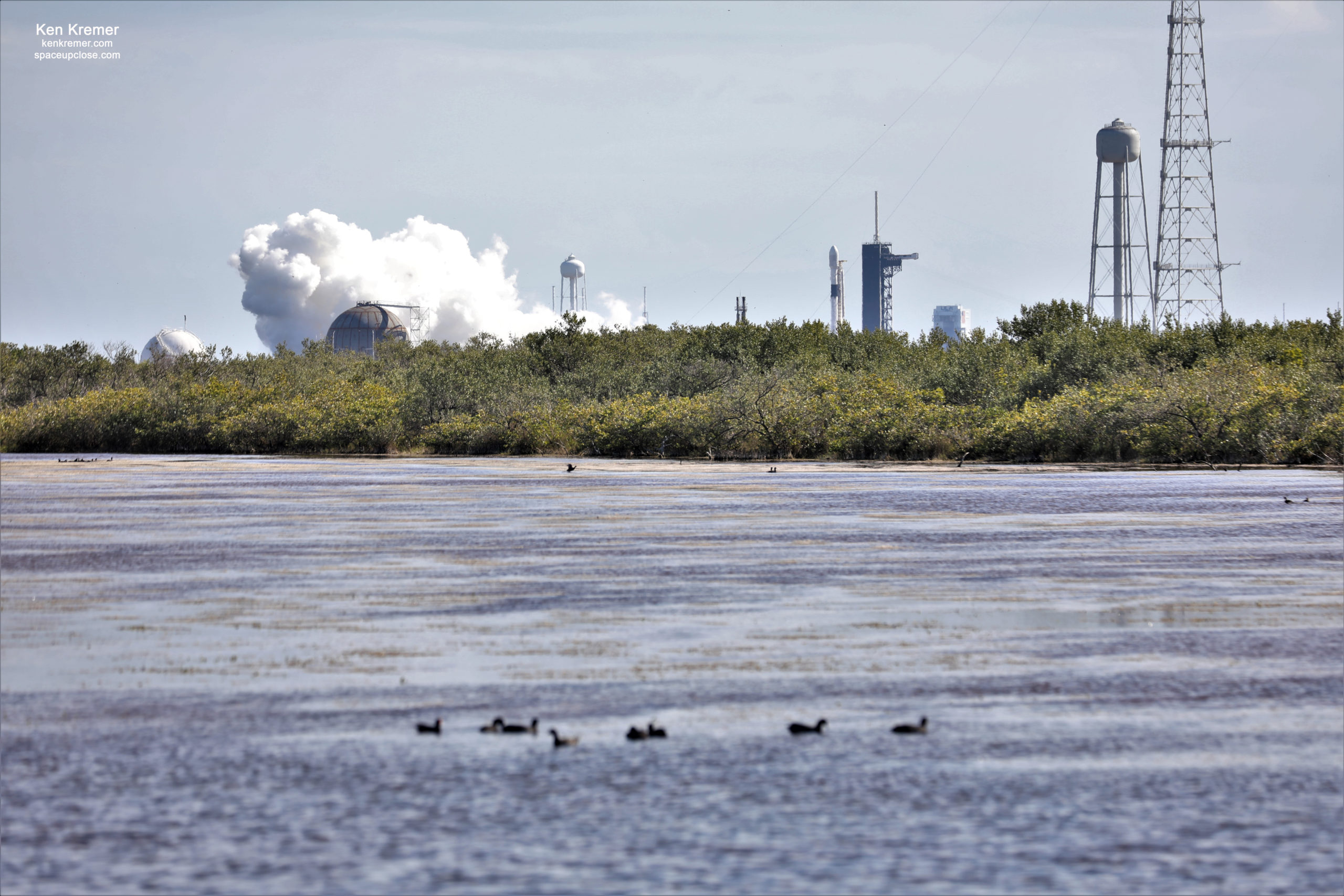
I watched the mid-afternoon engine test Sunday afternoon from nearby in Cape Canaveral National Wildlife Refuge, FL. Roughly only about 3 miles away and observed the exhaust plume and vapor cloud emanating from the bottom of the booster.
Enjoy my eyewitness photos of the static fire test at Space UpClose.
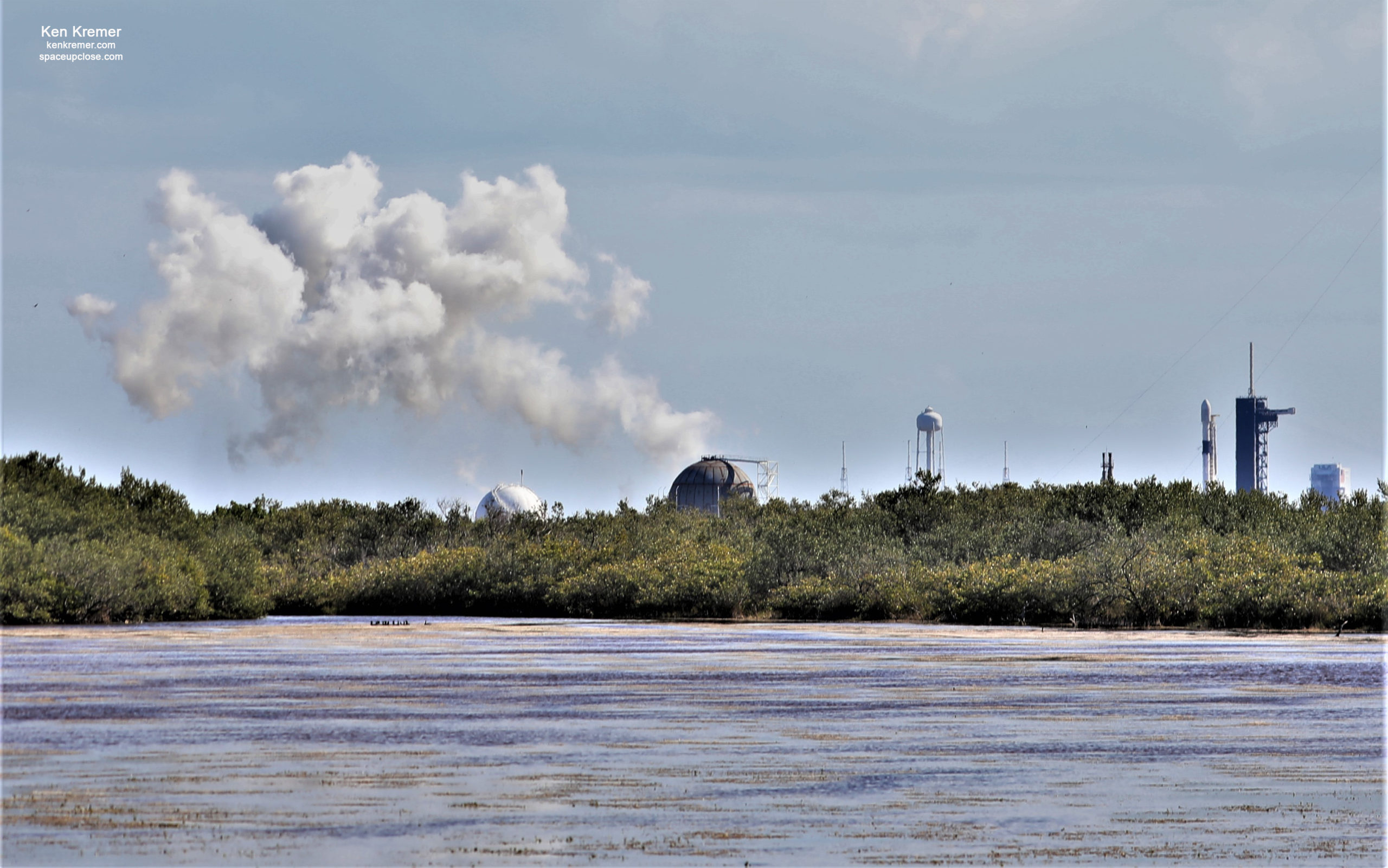
All 9 Merlin 1D first stage engines were ignited Sunday at 2 p.m. to generate approx. 1.7 million pounds of thrust for about 3 seconds or so
During the hold down static fire test, the rocket’s first and second stages are fueled with liquid oxygen and RP-1 propellants just like an actual launch, and a simulated countdown was carried out to the point of a brief engine ignition lasting several seconds or so.
For many years SpaceX routinely carried out static fire tests.
But they skipped the test for the last 4 launches. It is not known why they stopped or why they resumed.
Its been quite a saga for this launch with multiple prelaunch delays already.
Initially SpaceX was targeting the static fire test for Friday, Jan. 29.
But while I was watching the Friday test attempt from a distance in Titusville it was aborted at the last moment.
The rocket was lowered horizontal Friday afternoon and raised vertical again Saturday afternoon.
Another indication of a supposed try for an engine test on Saturday never actually materialized.
From a distance Sunday’s test appeared normal – however as always we awaited SpaceX confirmation of a good result.
But that took quite a long time, more than 7 hours for SpaceX to confirm a good test result.
The uncommonly lengthy delay was likely due to the team monitoring the launch and recovery weather. As mentioned above they initially targeted Tuesday and then Wednesday morning.
Further weather delays are quite probable at this time.
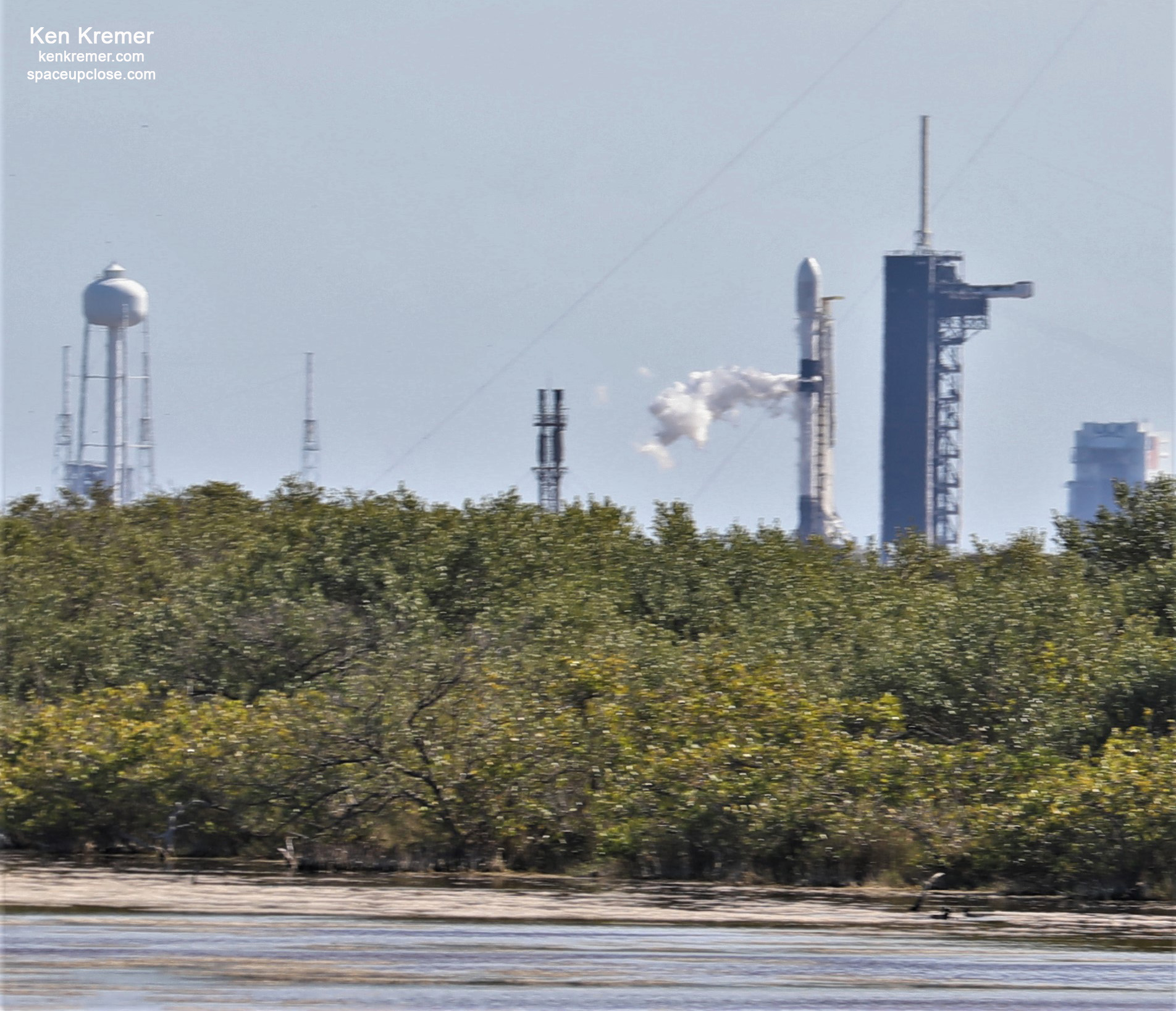
The launch time move about 20 to 25 minutes earlier each day of delay.
The launch window is instantaneous.
SpaceX will webcast the Falcon 9 launch live starting about 15 minutes before the planned liftoff:
You can watch the launch webcast here: spacex.com/launches
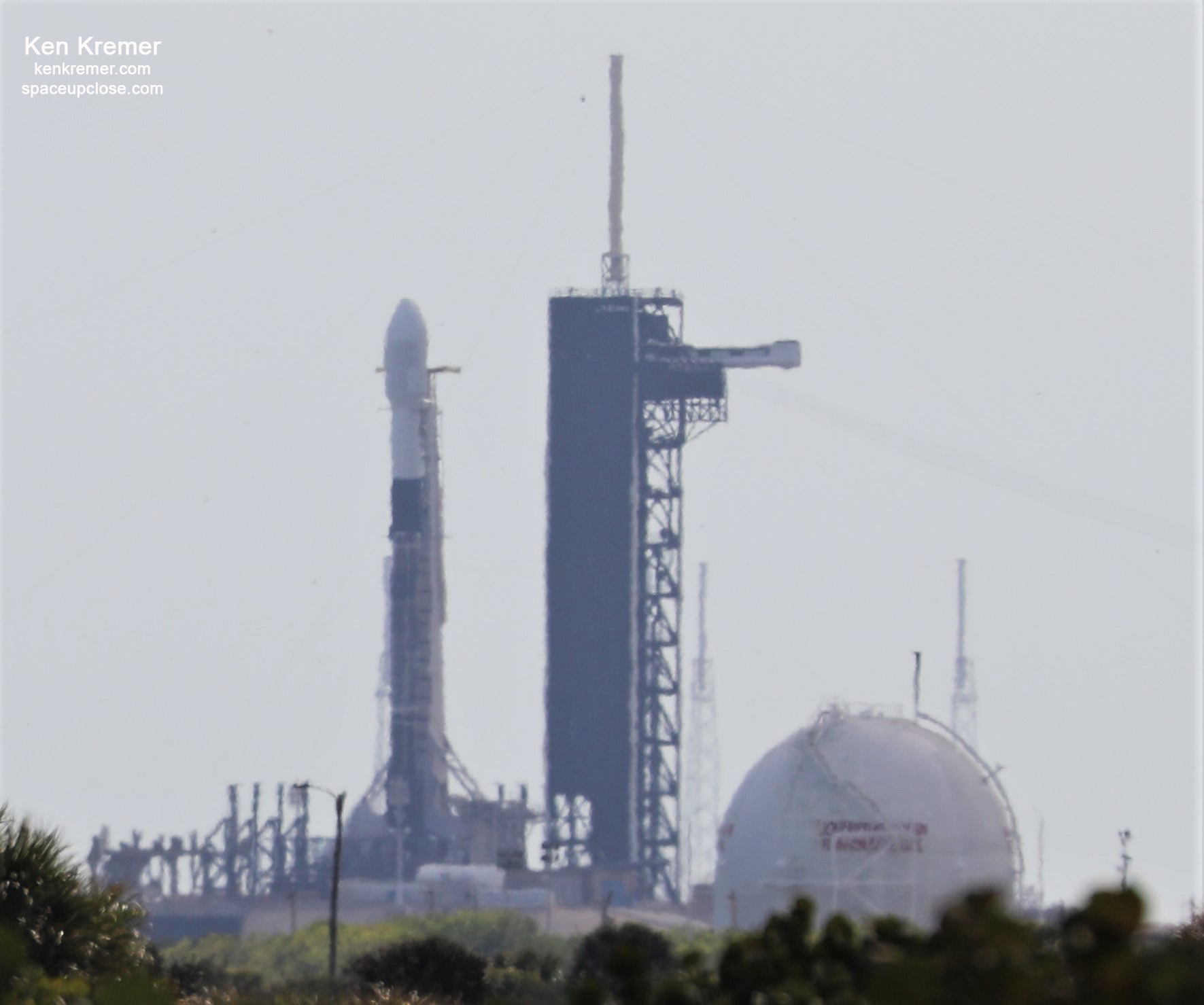
There are no rideshare payloads on this flight.
The weather prognosis is moderate.
At this time the Air Force meteorologists team at the 45th Weather Squadron is forecasting a 60% chance of acceptable conditions at launch time on Wednesday Feb . 3.
The Primary concerns are Liftoff Winds.
SpaceX says you can sign up to receive updates on Starlink news and service availability in your area. Please visit starlink.com
The prior Starlink launch on the 17th mission took place on Inauguration Day Jan. 20 – also from pad 39A. Read our story and check out our photos.
Following the 17th mission that brought the total number of Starlink satellites launched to 1,015 internet satellites.
Plus another 10 Starlinks were launched on Transporter-1 to polar orbit for the first time.
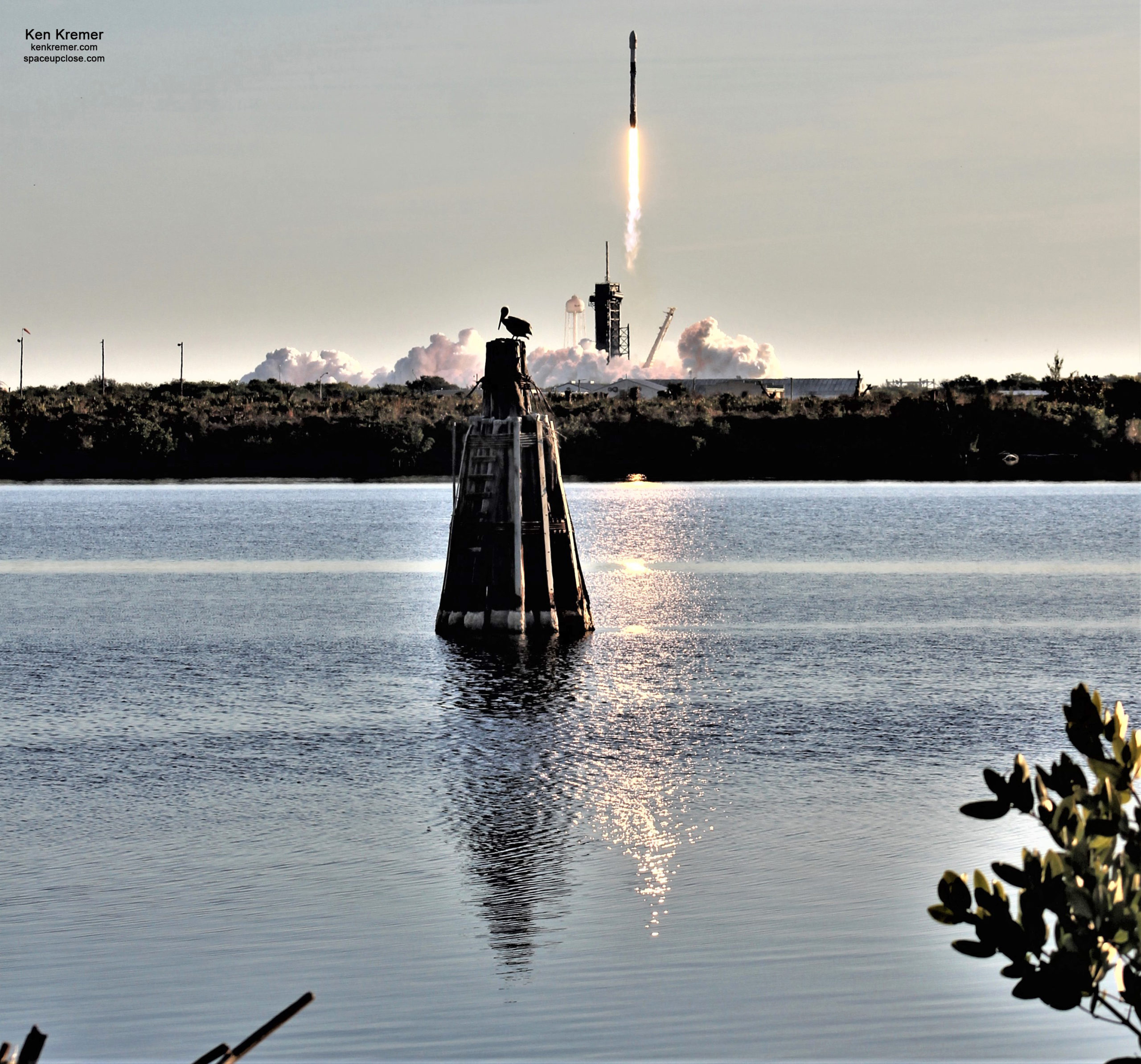
This launch by SpaceX of the next batch of Starlink internet satellites on the 18th Starlink mission would have been their fourth in January when it was originally tentatively slated for late in the month.
But the delays have push this into February.
And another Starlink launch #19 is tentatively slated for Feb 4. But that is likely to shift to the right.
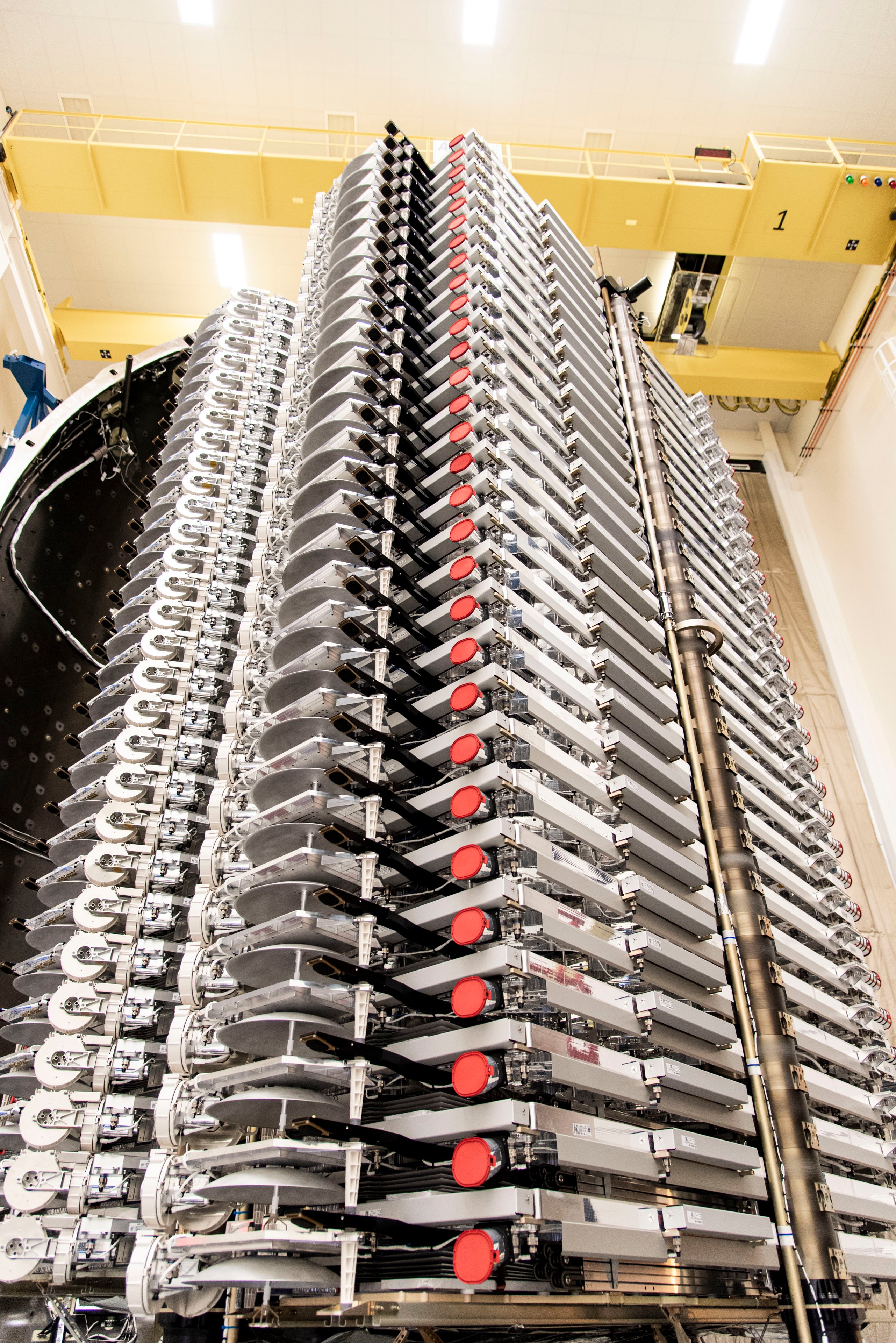
My static fire test photos were featured on WKMG CBS 6 Orlando TV News multiple broadcasts on Feb. 1.
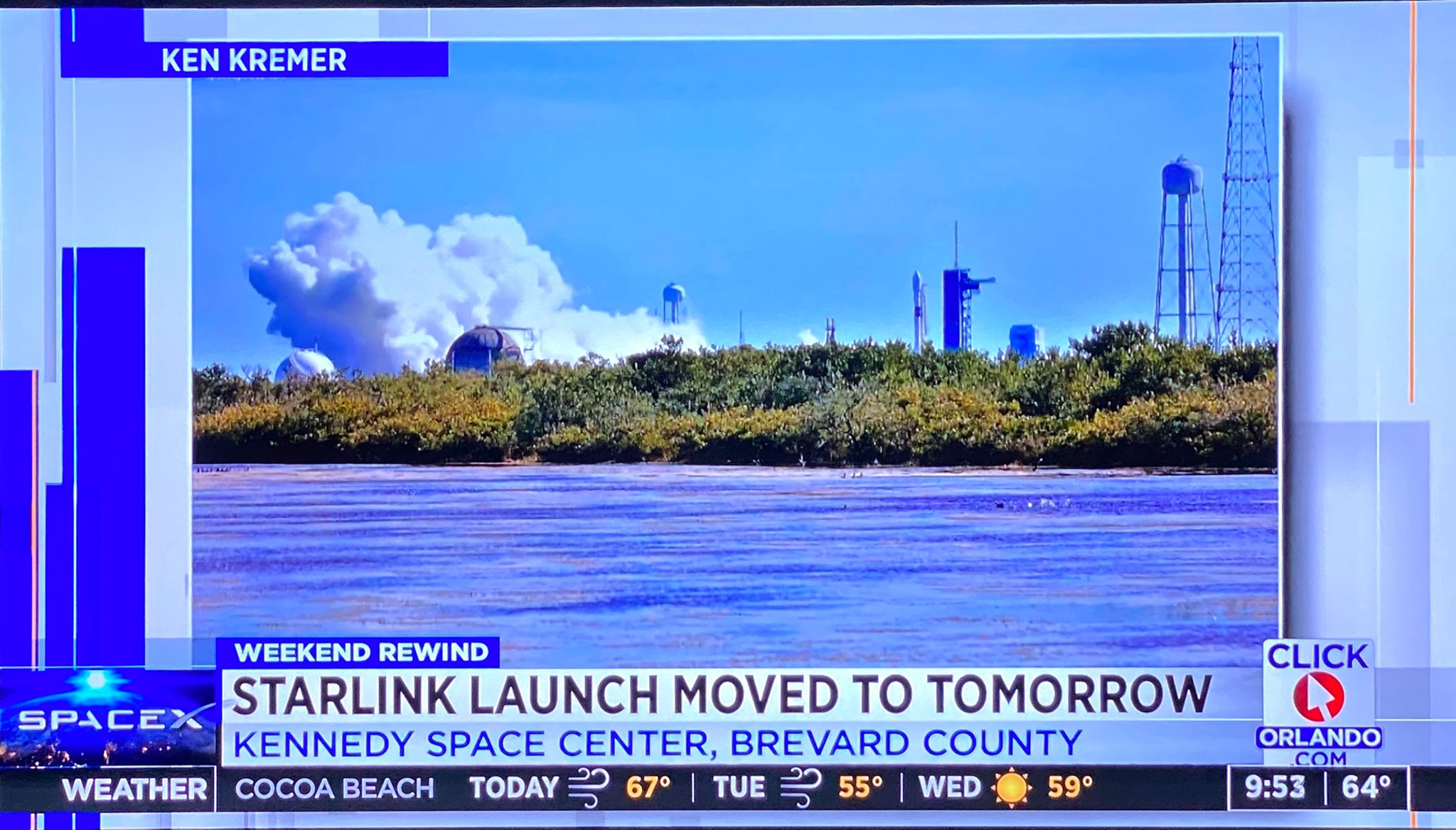
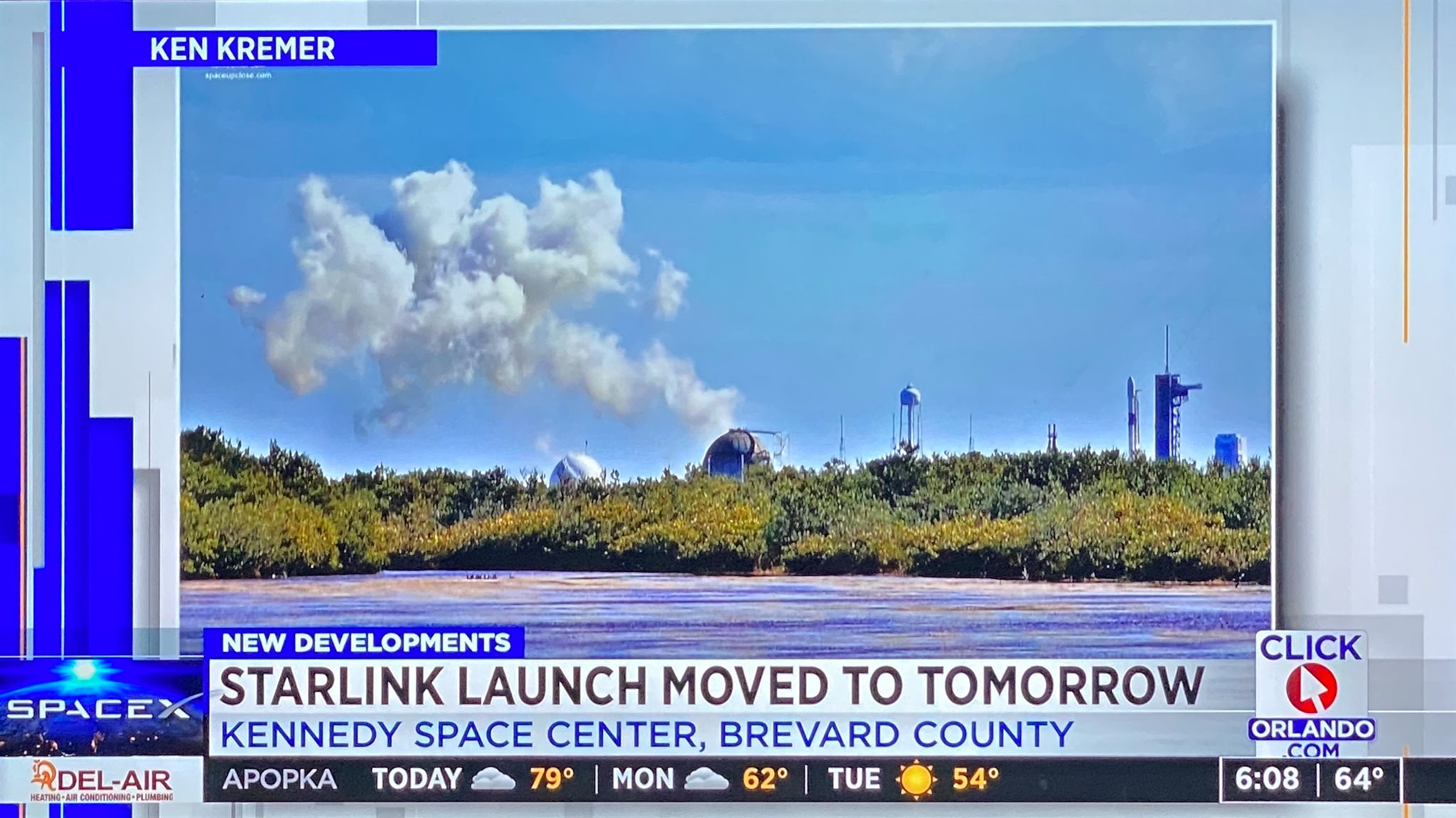
Watch Ken’s continuing reports about Artemis and NASA missions, SpaceX, Starlink, Commercial Crew and Starliner and Crew Dragon and onsite for live reporting of upcoming and recent SpaceX and ULA launches including Crew 1 & 2, Demo-2, ISS, X-37B, Solar Orbiter, Mars 2020 Perseverance and Curiosity rovers, NRO spysats and national security missions and more at the Kennedy Space Center and Cape Canaveral Space Force Station.
Stay tuned here for Ken’s continuing Earth and Planetary science and human spaceflight news: www.kenkremer.com –www.spaceupclose.com – twitter @ken_kremer – email: ken at kenkremer.com
Dr. Kremer is a research scientist and journalist based in the KSC area, active in outreach and interviewed regularly on TV and radio about space topics.
………….
Ken’s photos are for sale and he is available for lectures and outreach events
Please consider supporting Ken’s work by donating at Patreon:
https://www.patreon.com/kenkremer
x



